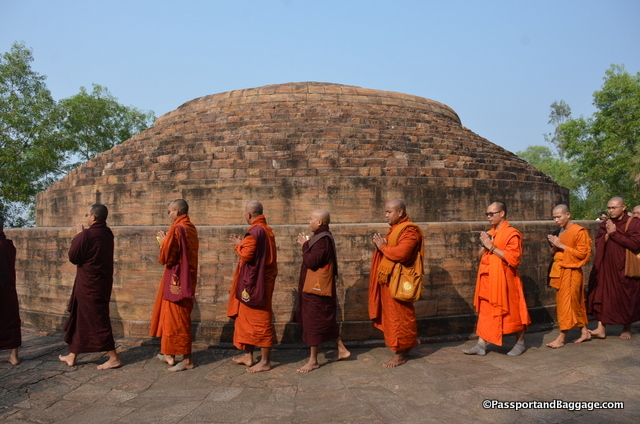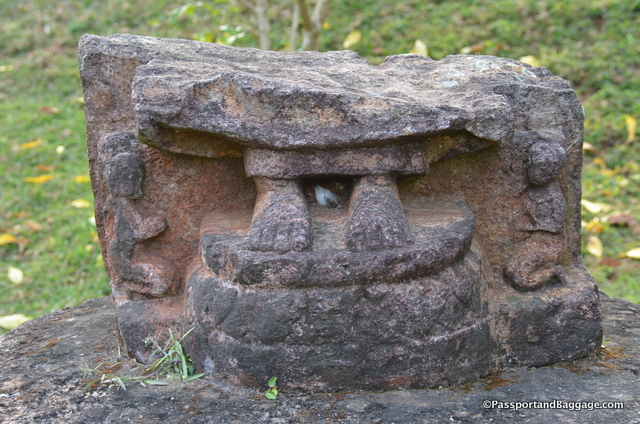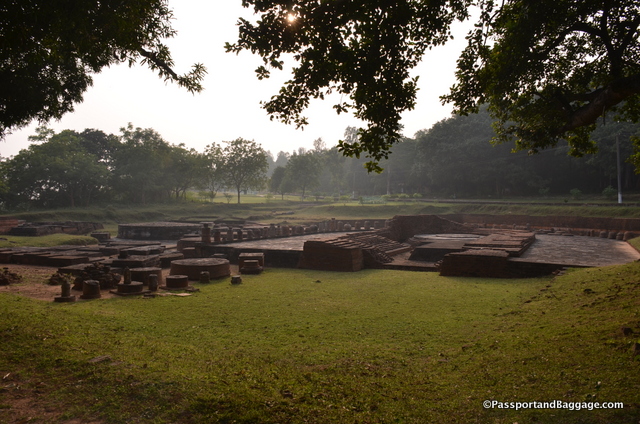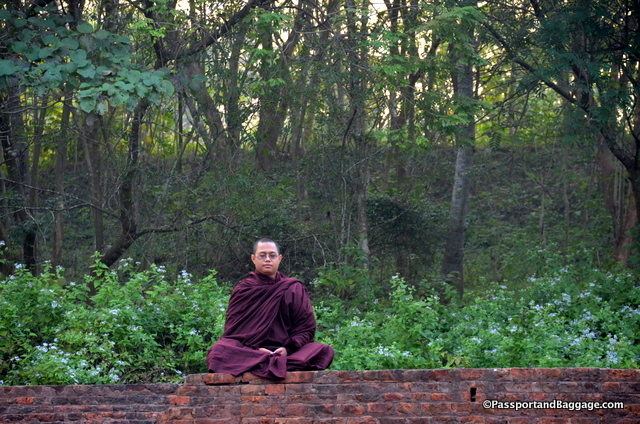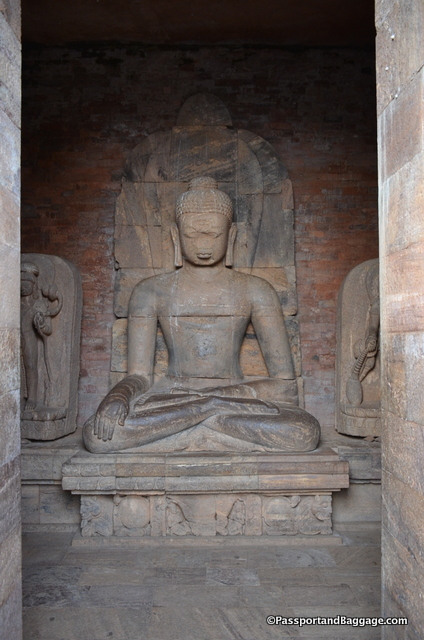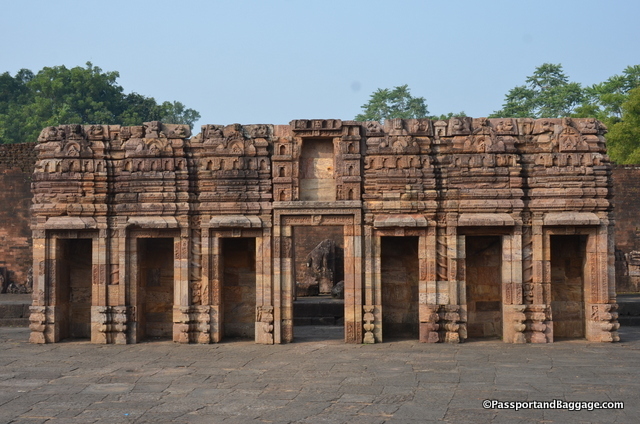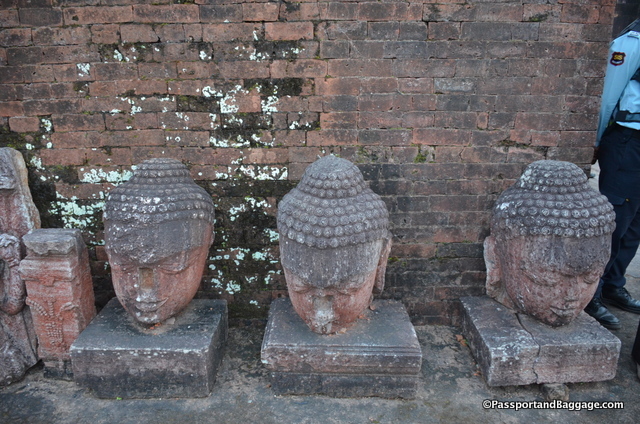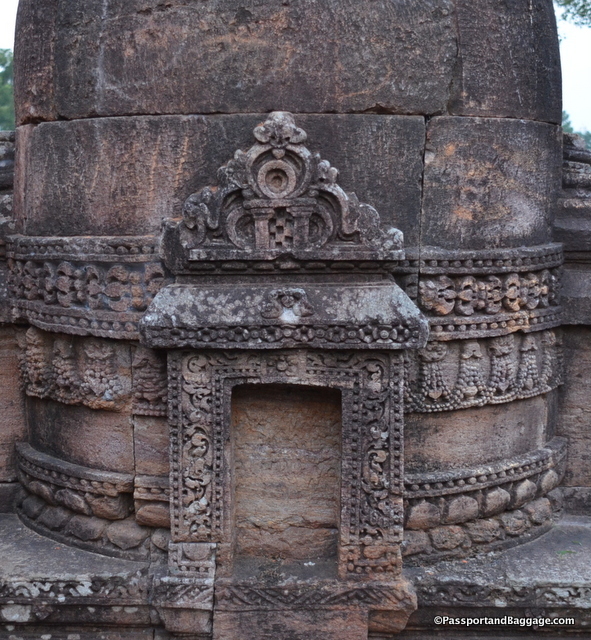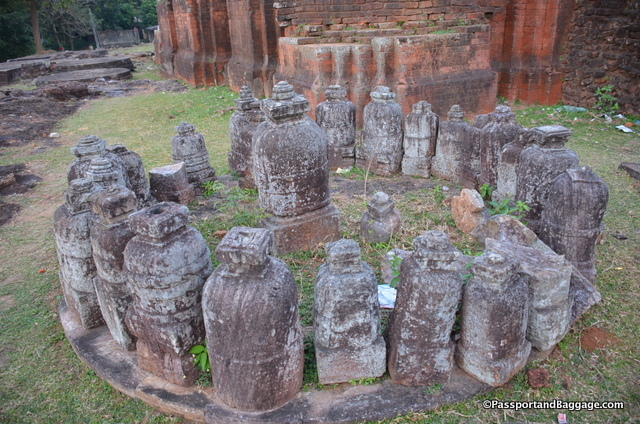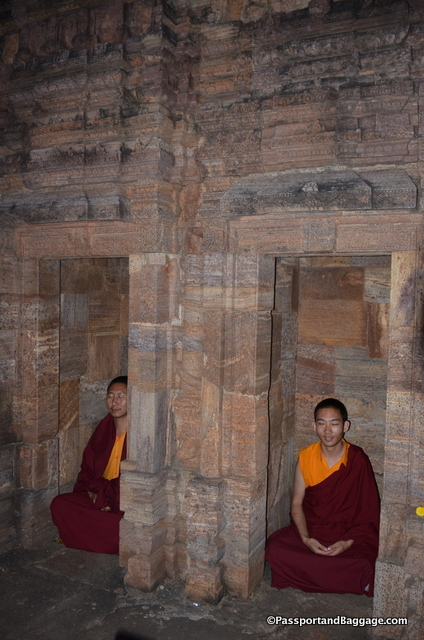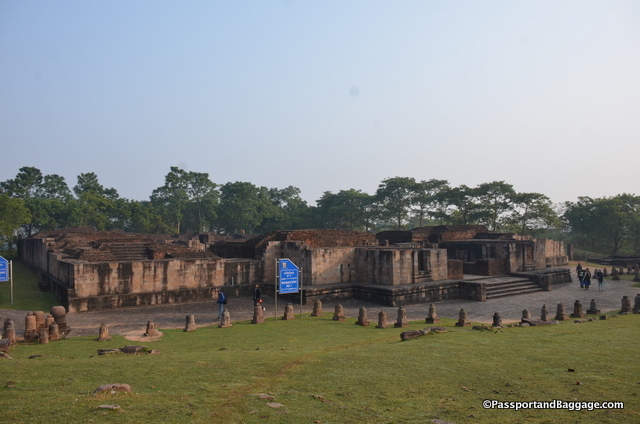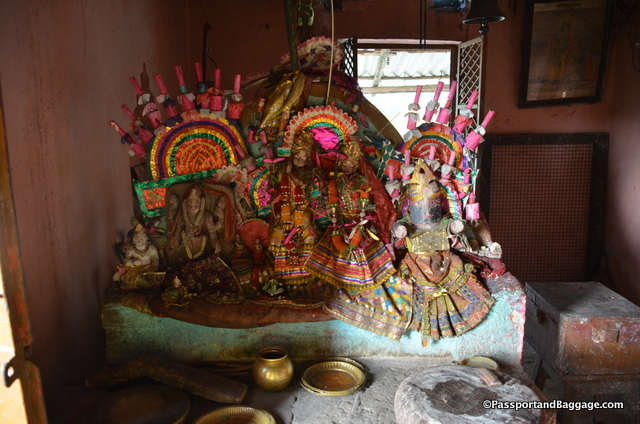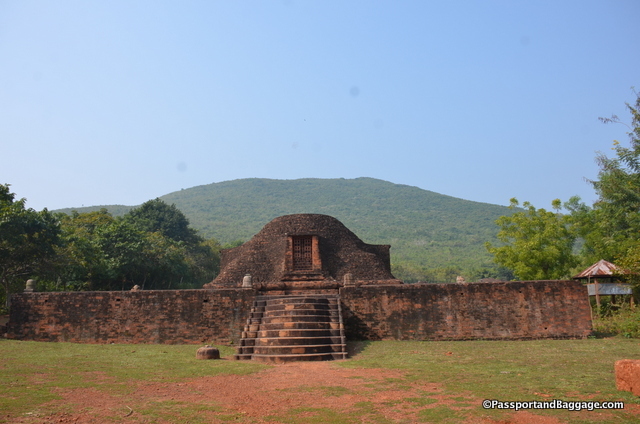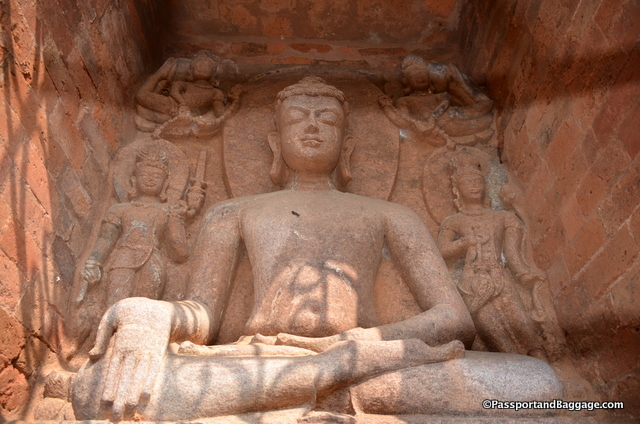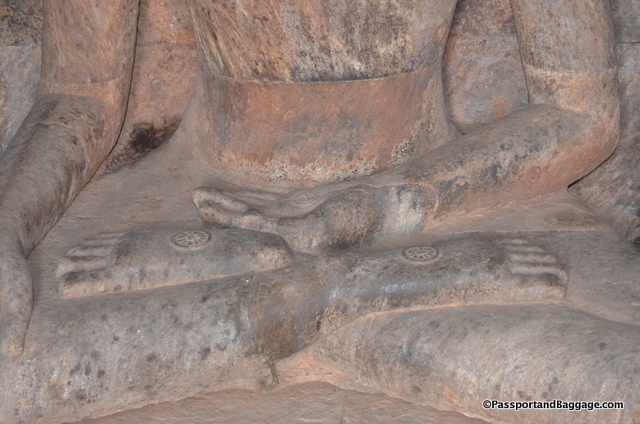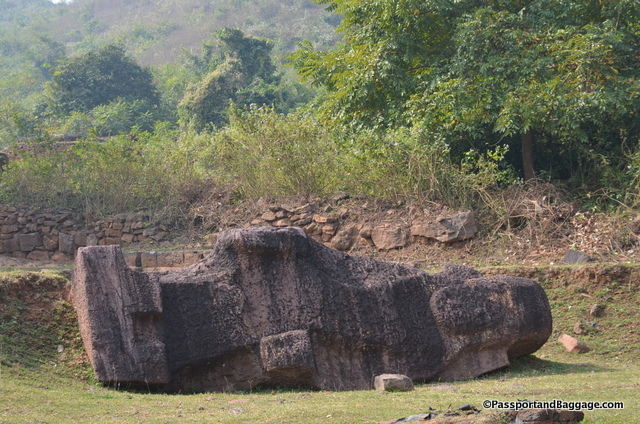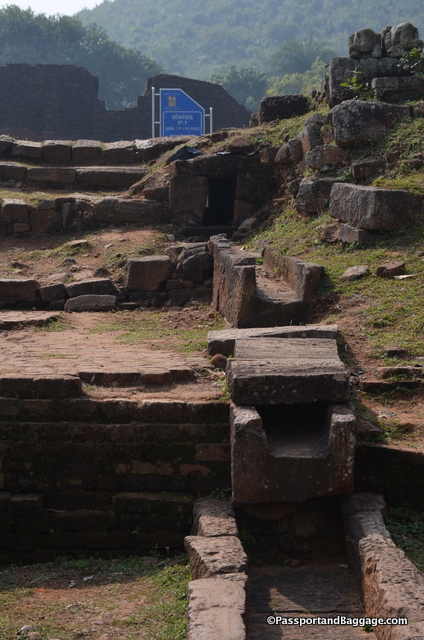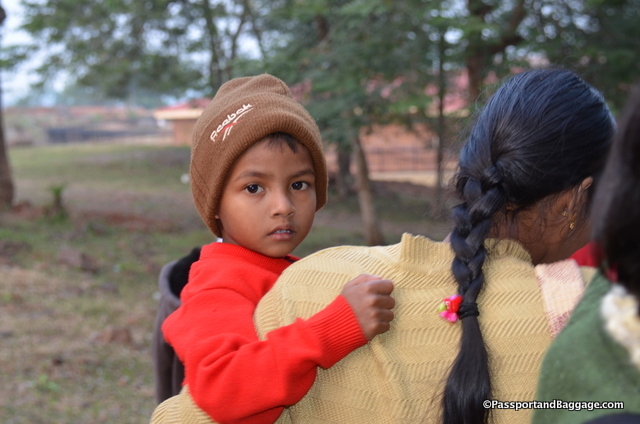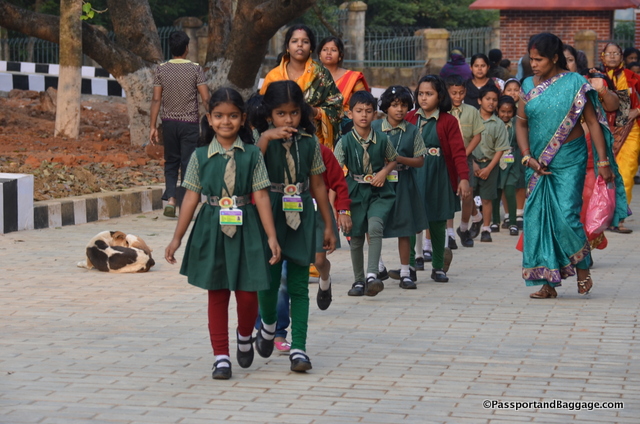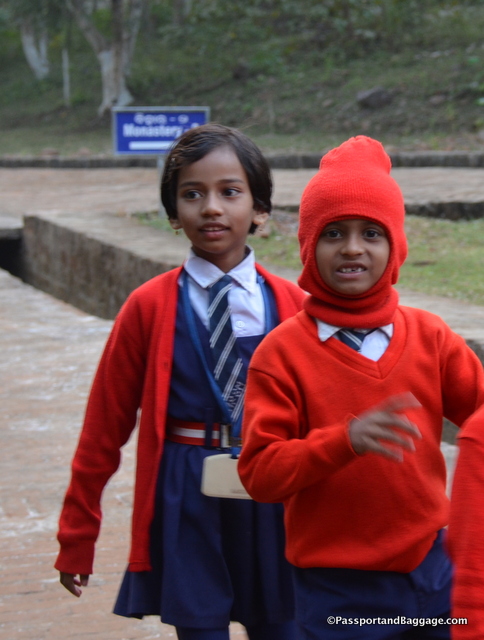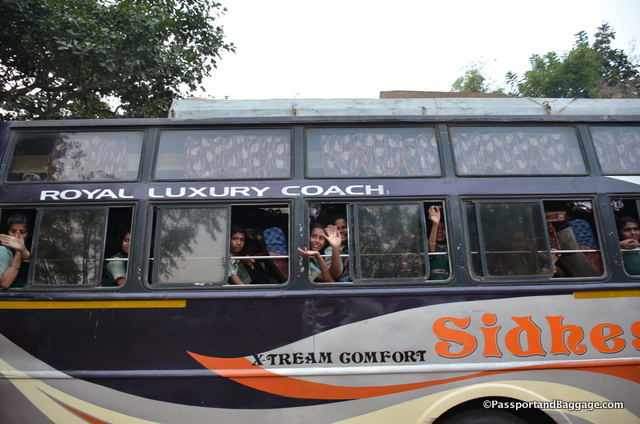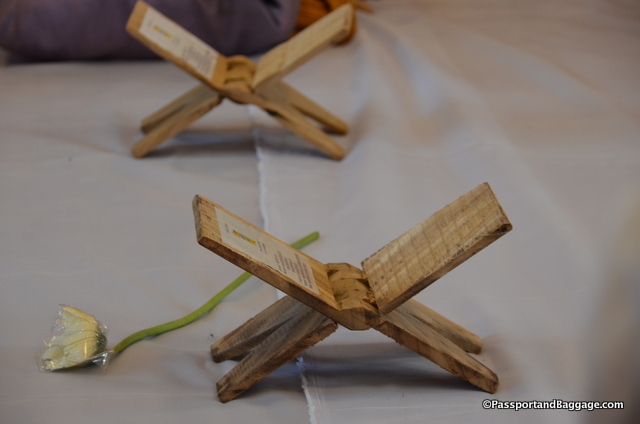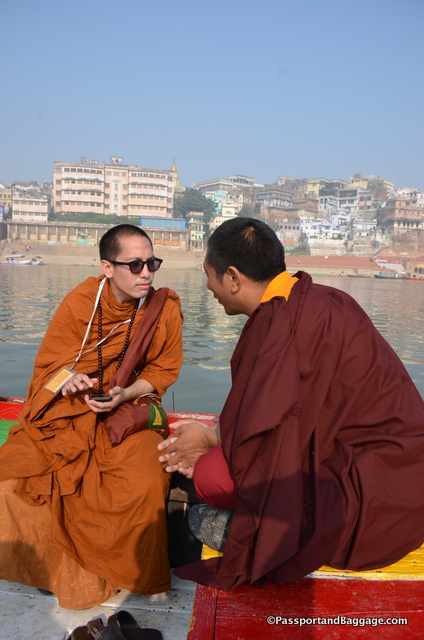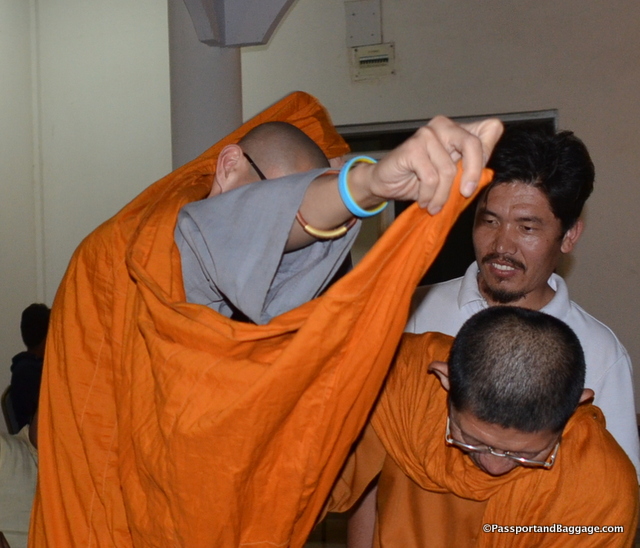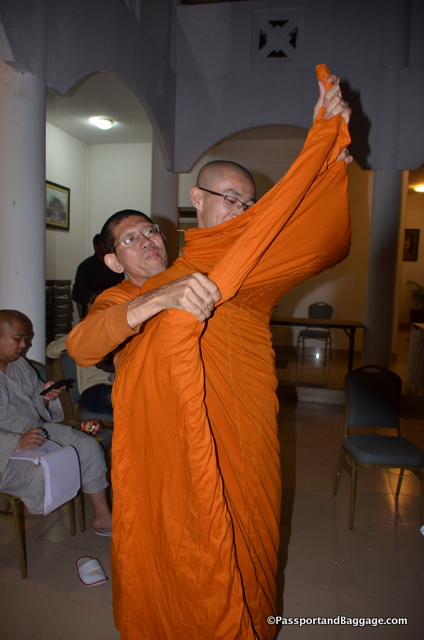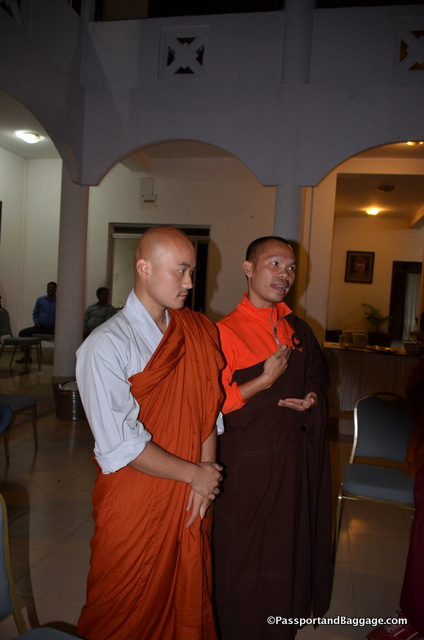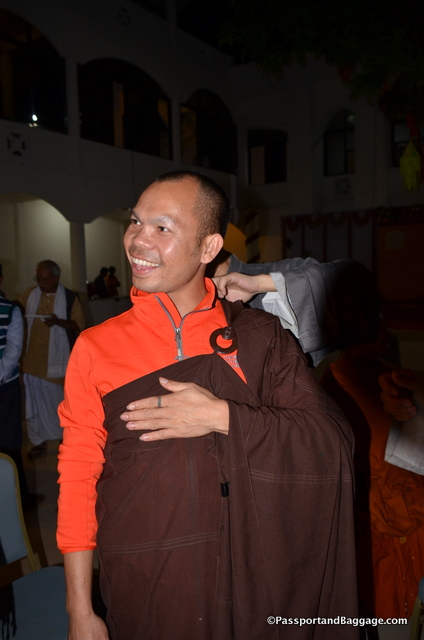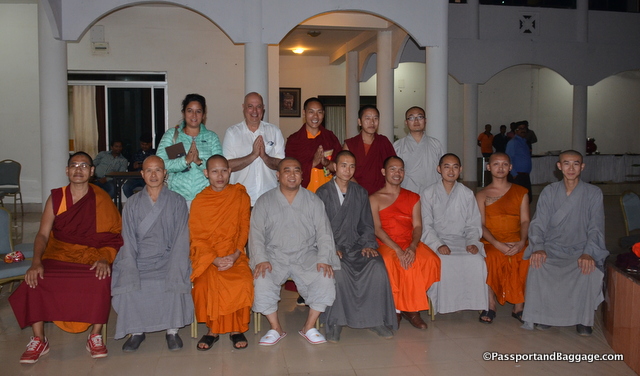December 2017
Over the course of the three days at our last stop, I was able to indulge my passion for archaeology. We visited Lalitgiri, Ratnagiri, and Udayagiri, all within a few kilometers of each other. These three complexes are known as the “Diamond Triangle”. Lalitgiri (also known as Naltigiri) is one of the oldest Buddhist sites in the state of Orissa. They each sit upon their own hill that bears their same names.

There was little sculpture spread around the site at Lalitgiri as most were in the museum where photos were not allowed. What was on the site were incomplete but still interesting.
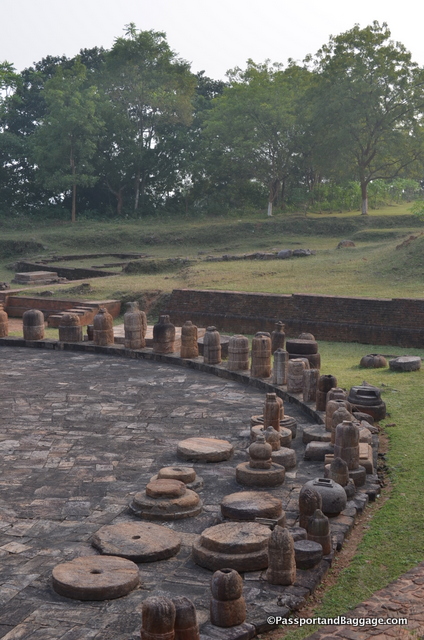 Lalitgiri appeared to have a continuous monastic presence from the 6th century through to the 11th century.
Lalitgiri appeared to have a continuous monastic presence from the 6th century through to the 11th century.
While Lalitgiri was discovered in 1905 and had various small excavations, it was not thoroughly examined until the 1980s. These excavations were done by the Archaeological Society of India. The biggest find at Lalitgiri was the remnants of a large stupa on the hill (which was subsequentially rebuilt as you can see in the photo at the top). Within the stupa, two rare stone caskets were found with relics of what is presumed to be Buddha. The stone caskets, made of Khondalite stone, had three other boxes within them, made of steatite, silver, and gold respectively; the gold casket, which is the last one, contained a relic or dhatu in the form of a small piece of bone. Items from this site date to the 2nd century BCE to the 13th century CE.
The museum, at Lalitgiri, is typical of Indian museums at archaeological sites. It has no temperature control, no labels and no order to its presentation with all the sculpture in one giant room. For this reason, the relic was removed and presently resides in Bubaneshwar. However, a very large, and very modern museum is almost finished on the site and the relic, along with other important items, it is hoped, will return to Lalitgiri.
Down the road is Ratnagiri (Hill of Jewels), not excavated until the 1960s there are impressive remains and a large number of sculptures scattered throughout the site. This site appears to have been first occupied in the 5th century with continuous occupation until the 13th century. These stone sculptures, along with a few bronze and brass images of Buddha and the Buddhist pantheon found during the excavation help to show that Ratnagiri was a Tantric center comparable to Nalanda.
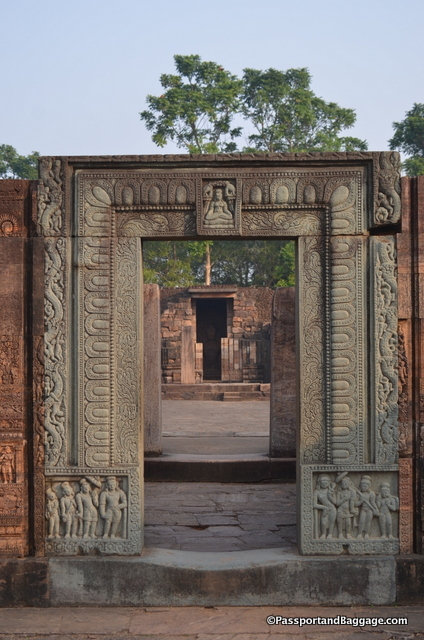
The entryway to the temple. In the niche on the other side of the open courtyard is a very large Buddha

I have always had a passion for votive stupas and at Ratnagiri, there are thousands and all laid out in very interesting ways
*
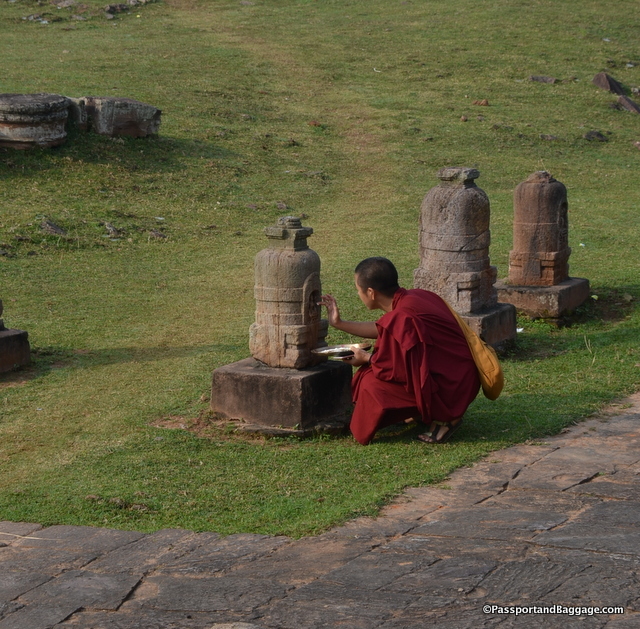
The following morning some of us returned to Ratnagiri, in this case, the monk came to pay respects by making offerings to the deities on the stupas.
The third site was Udayagiri (Sunrise Hill). The first excavation of this site was in the 1950s with the last being the year 2000. Udayagiri is the largest Buddhist complex in the state of Orissa, but the actually excavated area is smaller than the other two sites and does not hold nearly as many sculptures, but its location is idyllic. The relics from this site date from the 13th century CE.
These three sites are very close to each other and yet so very, very far away from civilization. It is obvious that the Orissa government is trying to develop the area for tourism, but until they can build decent accommodations it most likely will not happen anytime soon. However, every single local person I have had the pleasure to meet is so very proud of these sites that this pride should eventually move the mountains it will take to build decent enough accommodations to want people to spend time here.
Having said that I wonder if the tourism that comes won’t destroy what makes these sites so nice. At present, the only tourists are true seekers of either Buddhist sites or archaeology, overwhelmed by children and families. I hope a steady stream of “paying customers” does not do more damage than good.
*
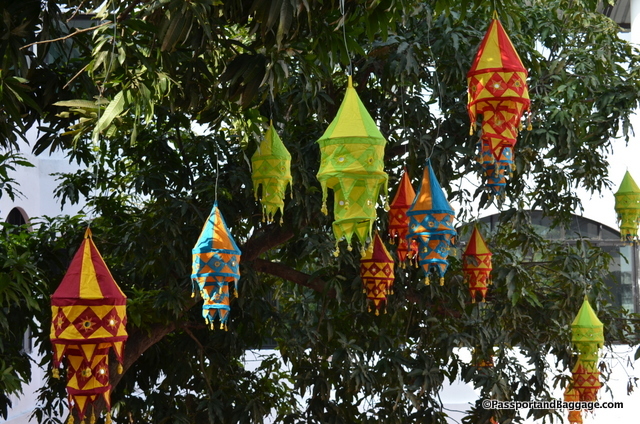
These were hanging from the tree in the courtyard where we took our meals, they added such a festive touch to the tree.
It is hard to believe that my 58 days accompanying monks on 2 Dhammayatras and one giant ceremony at Bodhgaya has come to an end.
The emotions I feel will take months, if not years to process. It was a religious experience for many, but for me, it was one of exploring a culture I had never been exposed to, i.e. Buddhism at its roots, and spending long periods of times with Buddhist monks from all over Southeast Asia.
The language barriers were immense, but smiles were too.
During the Theravadan Dhammayatra, Sarnath to Vaishali, I watched the monks all become friends once they realized Buddhism bound them and the heck with language differences.
Bodhgaya is a pageant of history and culture and so many countries, that the thing to concentrate on is sitting under the Bodhi Tree, where Buddha found enlightenment, and realize; if you are religious, how sacred it is, or if you are a history nut, just how many millions of people have circumambulated the Bodhi Tree and what it meant to each and every one of them.
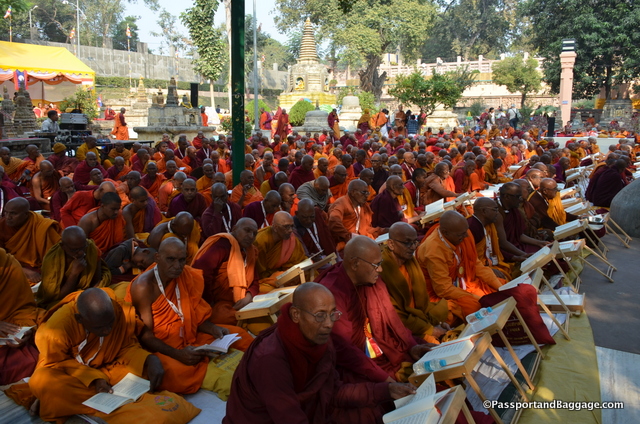 The Mahayana Dhammayatra began with the walk in the Jethian Valley and ended in the Diamond Triangle. I spent the last night watching the monks discuss their differences in practices, and then teach each other how their robes were different and dressing each other up in laughing hysterically at the “costume party”. It was one of the more endearing moments of the entire 58 days.
The Mahayana Dhammayatra began with the walk in the Jethian Valley and ended in the Diamond Triangle. I spent the last night watching the monks discuss their differences in practices, and then teach each other how their robes were different and dressing each other up in laughing hysterically at the “costume party”. It was one of the more endearing moments of the entire 58 days.
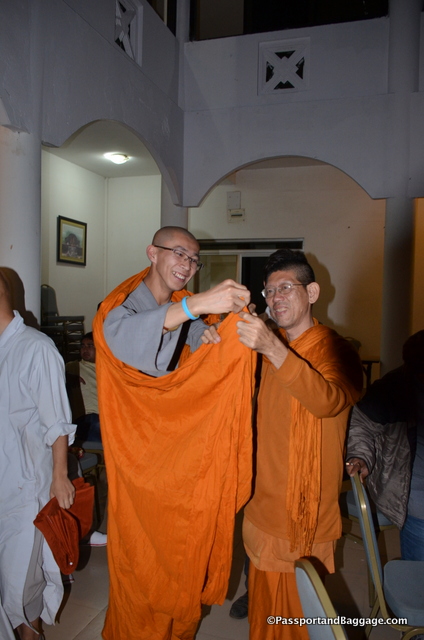
This picture is special because of the monk on the right. He spoke not one word of English, but he was a photographer. he was kind to me throughout the trip, even giving me a hand to pull me up on a fence during the Jethian Valley walk. That may not seem like much, but Theravadan’s are not allowed to touch women, so his gesture was out of pure kindness.
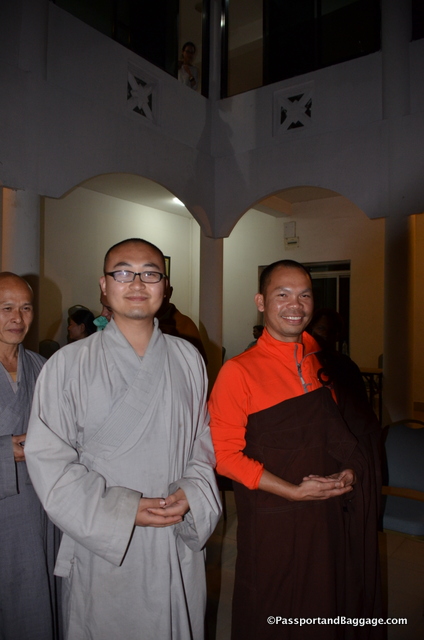
The Japanese monk on the left gave the Thai monk on the right his outer coat. These two countries practice very different types of Buddhism, so this kind of interchange is truly significant.
As I said, I think it will take a long time for me to process what has just happened, and I thank each and every one of you that has come along on this journey. I hope you have gleaned just one tiny look into the cultural restoration project of bringing the Tipitaka back to India, as well as the side vignettes about India itself.
